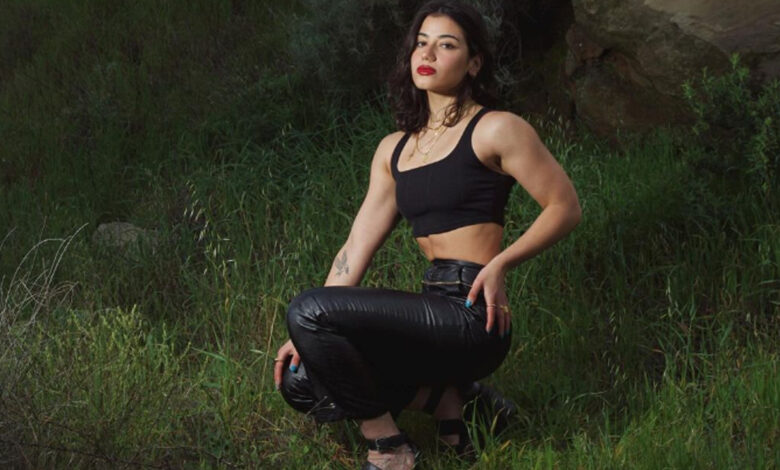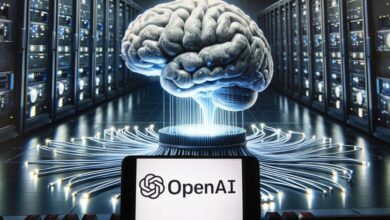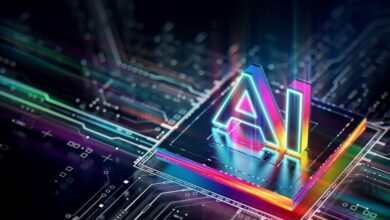Influencers Harness AI to Boost Fame and Fortune

Artificial intelligence (AI) is having a Kim Kardashian moment.
Dicer.ai, an AI-driven advertising performance analytics company, and FameFlow.ai, the world’s first celebrity and influencer AI likeness rights licensing platform, announced a partnership on Wednesday (April 10) to boost the influencer marketing landscape. The move is part of a broader trend of influencers increasingly using AI.
“AI can streamline what used to be a tedious influencer discovery and relationship-building process by creating instant filters, screening for influencer fraud, engagement metrics and the forecasting of campaign results based on past data,” Sara Saffari, a fitness influencer with over 2 million followers on Instagram, told PYMNTS. “This means campaigns that can be better targeted, evaluated and eventually run at scale.”
The influencer economy is growing. A 2023 study by the influencer marketing platform LTK showed that Generation Z and millennials trust content creators more than traditional ads and celebrities.
The study also noted that people of all ages are buying more products online via creators’ affiliate links, particularly Gen Z and millennials, at 75% and 67%, respectively. Additionally, the findings confirmed that social media significantly influences consumer shopping behaviors.
AI Influencer Boost
The Dicer collaboration provides brands and digital agencies with access to celebrity and influencer endorsements, coupled with real-time data on ad performance, aiming to boost engagement and improve ad profits.
“By combining Dicer’s analytical capabilities with FameFlow’s influencer reach, we’re offering a never-before-seen approach to digital marketing,” said Marco Bianco, CEO of Dicer, in a news release. “Our joint solution not only simplifies the process of launching mega-influencer-endorsed likeness campaigns but also ensures they are optimized for peak performance.”
Saffari is also the CEO of InfluencerNexus, an agency for influencers. She said AI now allows brands and agencies to streamline influencer marketing more rapidly and without guessing the potential performance of campaign results. It also allows for forecasting key performance indicators (KPIs) throughout the campaign process.
“This means a far more robust influencer economy that is less ‘wild west,” which ultimately drives far better results for influencers, Saffari said.
As a fitness influencer who posts pictures of her workouts and lifestyle, Saffari uses AI to streamline influencer campaigns for brands by sourcing, auditing and creating campaigns.
“I also use it to streamline content creation across my audience,” she added. “Content that once took days now takes 1-2 hours maximum for 30 days of content.”
Artificial intelligence can also streamline the process of integrating sponsor advertisements into popular influencer videos. By using AI, companies can more efficiently identify suitable influencers, match their content themes with relevant ads, and automate parts of the negotiation and placement process.
This technology not only simplifies the logistics but also enhances the precision of targeting audiences, ensuring that the right ads reach the most receptive viewers based on their viewing habits and preferences.
“We see AI as a tool to open up a new channel for enabling influencers and creators to work with companies by embedding Attention Media elements, such as branded objects, into the videos,” Cory Treffiletti, CMO of Rembrand, told PYMNTS.
“Using AI, you can do so in a post-production process, allowing creators to create and monetize later. This scales more broadly than sponsored posts, and our proprietary technology enables this in a more realistic, constrained manner than you get with a horizontal approach to a generative AI model,” he added.
AI is helping ad companies find influencers and predict trends. Previously, advertisers would scour TikTok or Instagram to find influencers, Logan Welbaum, founder of Plai, an AI-powered marketing tool, told PYMNTS.
“AI is also helping algorithms on social media platforms put more content towards a more relevant audience,” Welbaum added. “How do you get people to stay on the platform longer? Place the right content at the right place at the right time — and with the help of AI, social media platforms are getting much better at this. This is helping create more influencers faster than ever.”
Deepfake Influencers?
One of the more surprising trends impacting the influencer economy is the use of AI deepfakes that pose as influencers or become influencers in their own right. These AI-generated figures can create content, interact with followers, and endorse products like human influencers. The technology behind these deepfakes allows them to mimic human behaviors and appearances with stunning accuracy, making them almost indistinguishable from real people.
The trend raises questions about authenticity and trust in the digital influencer space, as observers say that viewers may only sometimes be aware that they are interacting with a machine. Additionally, this phenomenon could reshape the marketing landscape by allowing brands to craft perfect influencer representations tailored to their exact specifications, potentially altering how products are promoted and who is considered influential in the digital realm.
“This is raising important discussions around the use of identity that all companies and marketers should follow,” Abby Rose, associate director at 829 Studios, a digital agency and marketing consultancy, told PYMNTS. “When embracing AI and its many benefits, we all must keep in mind that the goal of these partnerships is to center authenticity and humanity. We can’t let AI take us too far away from the personal appeal that makes influencers relevant to so many.”



